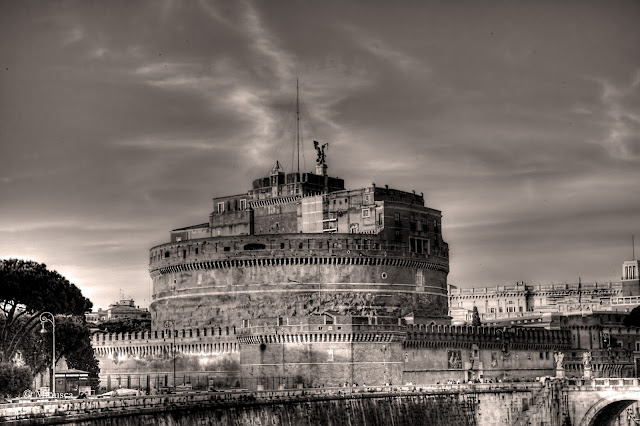National Monument Vittorio Emanuele II is best known as the Vittoriano.
For metonymy the monument is often called the Altar of the Fatherland, when it receives the Unknown Soldier. The term Victorian could lead to the belief that it is a tribute to the victory actually comes from the name of Vittorio Emanuele II of Savoy first King of Italy, where the monumental complex is dedicated.
the death of Vittorio Emanuele II in 1878 , It was decided to erect a monument celebrating the father of his country and with him the entire season Risorgimento . The original design work (one of the greatest achievements in ' nineteenth century) foresees the use of Roman travertine, but the monument was later built in Botticino marble , famous stone from Brescia (from Botticino fact), more easily shaped and from the area of \u200b\u200borigin Giuseppe Zanardelli (who had issued the Royal Decree for the construction of the monument). The project was inspired by Sacconi large complexes such as the classic ' Pergamon Altar and the Temple of Palestrina the monument should have been so great a space designed as a "hole" open citizens, in a sort of elevated plaza in the heart of imperial Rome, a symbol of a united Italy after the Rome of the Caesars and the Popes. To date, the Vittoriano is the monument in Marble Botticino largest ever made.
To erect it was necessary, between 1885 and 1888, carry out numerous evictions and demolitions in the area adjacent to the Capitol, played with an uncompromising program established Prime Minister Agostino Depretis . So we proceeded to the demolition of a large medieval quarter and were killed the Tower of Paul III, the bridge connecting with Palazzo Venezia (San Marco Arc ), the three cloisters of the convent of Ara Coeli and all minor building on the slopes of this hill. In this way, radically changed the urban layout of the area via the sacrifice of Ara Coeli, which still exists, no longer the main road that connected the Capitol with the adjacent neighborhood. The excavations brought to light the ' insula Ara Coeli , dating from the second century AD , still visible on the left side of the monument, a part of the walls of the Kings and remains of a mastodon. The expropriation was decided in 1928 the dismantling of the seventeenth century Church of Santa Rita , which stood at the foot of the staircase ' Ara Coeli , and his movement, ten years later, in the position , near the Teatro di Marcello .
The equestrian statue of Vittorio Emanuele II, core of the monument to Henry Chiaradia entrusted in 1889 by Emilio Gallori was completed and inaugurated in 1911.
Fountain left, Emily Quartermaine , represents the ' Adriatic , addressed to East , with Lion of San Marco . On the right the Tirreno of Pietro Canonica with wolf of Rome and siren Partenope , to symbolize the City of Naples .
Inside the exhibition spaces are dedicated to the history of himself and the Victorian seat of Central Museum of the Risorgimento , which in recent years also has temporary exhibitions of paintings.
Since June 2007, you can climb to the terrace of the chariot has an elevator, a terrace, from which it has an incomparable view of the eternal city, is reached by 196 stairs from the colonnade.
On the staircase is the Altar of the Fatherland, which is the most well known part of the monument, with which, at times, is identified.
is buried inside the Unknown Soldier : it is a body of an unknown Italian soldier selected from amongst the fallen of World War own choice to represent all the soldiers who could not have had a grave with a spade.
The central theme the monument is represented by two inscriptions on propylaea " UNITED patriae" CIVIUM FREEDOM "(in Latin " the unity of the homeland "and" the freedom of citizens "), each placed under the two chariots of Carlo Fontana and Paolo Bartolini.
(Source Wikipedia )




0 comments:
Post a Comment